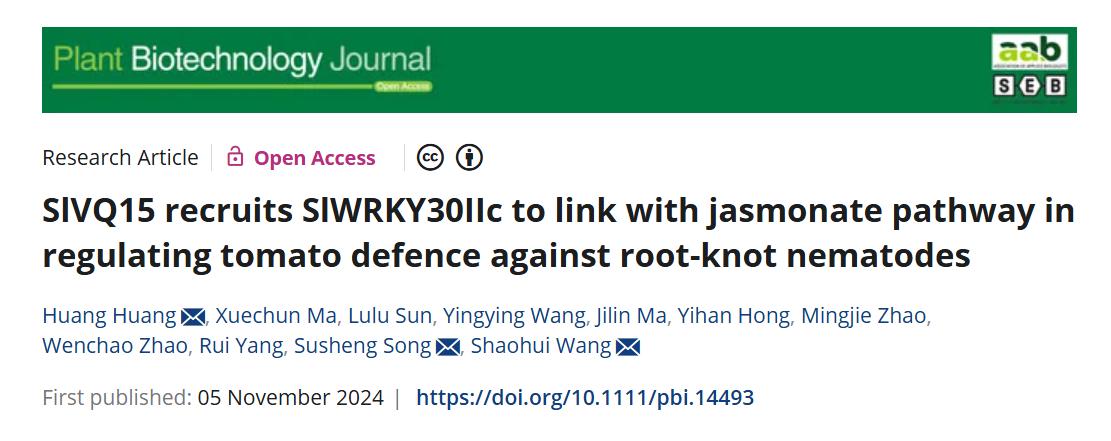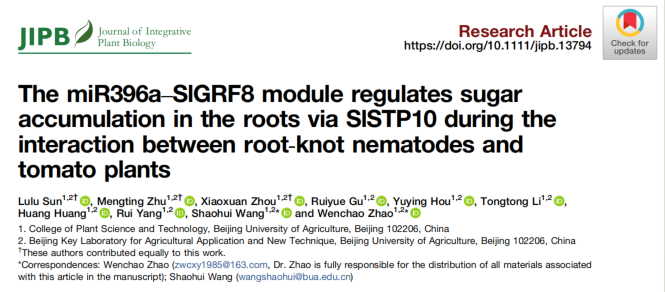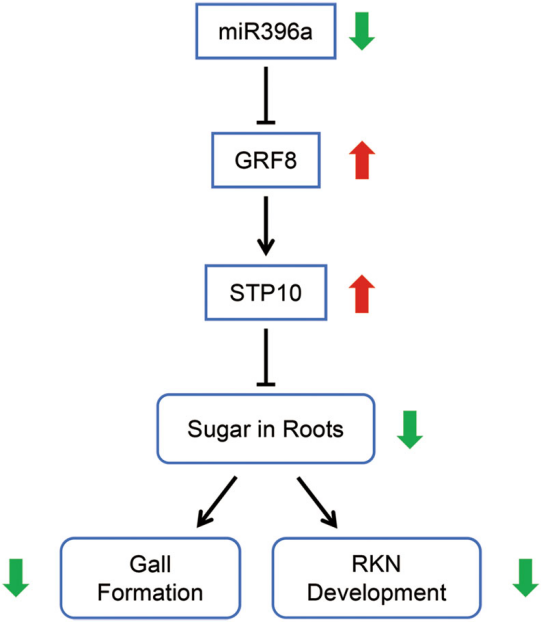The phytoparasitic root knot nematodes (RKNs, Meloidogyne spp.) are extensively distributed throughout the world. RKNs infect host roots, stimulate roots to form root-knots (galls), resulting in diminished agricultural yields and ultimately host mortality. Currently, the mechanisms underlying the plant-RKN interaction remain inadequately elucidated. Recently, professors Shaohui Wang and Wenchao Zhao group has shed light on the tomato-RKN interaction.
They published a research paper entitled “SlVQ15 recruits SlWRKY30IIc to link with jasmonate pathway in regulating tomato defense against root knot nematodes” in Plant Biotechnology Journal. SlVQ15 recruited SlWRKY30IIc to coordinately control tomato defense against the RKN Meloidogyne incognita without affecting plant growth and productivity. The jasmonate (JA)-ZIM domain (JAZ) repressors of the phytohormone JAs signaling associated and interfered with the interaction of SlVQ15 and SlWRKY30IIc. In turn, SlWRKY30IIc bound to SlJAZs promoters, and cooperated with SlVQ15 to repress their expression, whereas this inhibitory effect was antagonized by SlJAZ5, forming a feedback regulatory mechanism. Moreover, SlWRKY30IIc expression was directly regulated by SlMYC2, a SlJAZ-interacting negative regulator of resistance to RKNs.


A simplified model of the SlVQ15-SlWRKY30IIc module in resistance to the RKN M. incognita in tomato.
Additionally, they published a research paper entitled “The miR396a-SlGRF8 module regulates sugar accumulation in the roots via SlSTP10 during the interaction between root-knot nematodes and tomato plants” in Journal of Integrative Plant Biology. miR396a plays a negative role in defence against RKNs and a positive role in sugar accumulation in tomato roots. The overexpression of SlGRF8, the target of miR396a, decreased the sugar content in roots and the susceptibility to RKNs, whereas the grf8-cr mutation had the opposite effects. SlGRF8 regulated the sugar content in roots by directly activating the transcription of SlSTP10 in response to RKN stress. Moreover, SlSTP10 was expressed mainly in the tissues surrounding giant cells, and the knockout of SlSTP10 elevated both the sugar content in roots and tomato susceptibility to RKNs.


Working model of the miR396a-GRF8-STP10 module in response to RKN infection.
 LATEST NEWS
LATEST NEWS
 search
search


